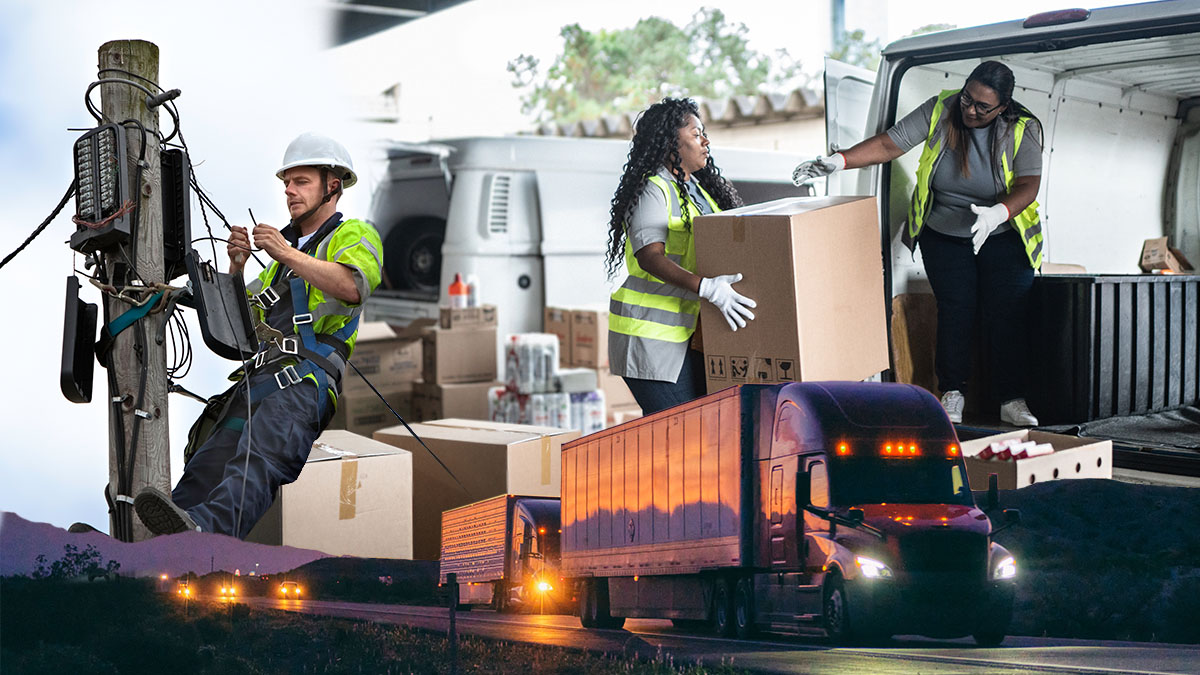Key points
- The Transportation, Warehousing and Utilities (TWU) Program provides leadership to promote health and safety among workers in these industries.
- The Program works with partners to address the leading causes of work-related injuries, illnesses and fatalities to improve the safety, health and well-being of the 6.7 million workers in this sector.
Overview

The TWU Program works with partners in industry, labor, government, trade associations, professional organizations, and academia to address the leading causes of work-related injuries, illnesses and fatalities to improve the safety, health and well-being of TWU workers.
The Program is comprised of eight industries. This super sector grouping includes two parts: the Transportation and Warehousing Sector and the Utilities Sector and covers:
- Transportation, including all modes of transporting passengers and cargo by air, rail, water, road, and pipeline.
- Warehousing, consisting of establishments engaged primarily in the storage of goods.
- Utilities, covering electric power, natural gas, alternative sources, water, sewage, and other systems.
Program priorities
The TWU Program has selected research priorities on the basis of burden, need, and impact and collaborated with other NIOSH research programs to write the research goals in the NIOSH Strategic Plan for FYs 2019-2026. Priority areas include (but are not limited to):
- Transportation and fatigue
- Human-machine interaction
- Work-related obesity and chronic disease
What we've accomplished
In 2022-2023, the Program:
- Published peer-reviewed journal articles on:
- Use of driver behavior questionnaire to measure road safety behavior among U.S. taxi drivers. Findings demonstrate the validity of a survey instrument for measuring four road safety behaviors: speeding, inattention, rule violation, and driving while fatigued.
- SARS-CoV-2 exposure reduction strategies in aircraft cabins. Findings show that distancing and masking, practiced alone or together, can reduce exposure risk.
- Use of driver behavior questionnaire to measure road safety behavior among U.S. taxi drivers. Findings demonstrate the validity of a survey instrument for measuring four road safety behaviors: speeding, inattention, rule violation, and driving while fatigued.
- Published NIOSH Science Blogs:
- Safe driving tips for the holidays in collaboration with the Wholesale and Retail Trade Sector and NIOSH Center for Motor Vehicle Safety.
- Legionnaires' Disease in Commercial Vehicle Operators in collaboration with the CDC partners. Commercial vehicle operators may be exposed to the bacteria that causes Legionnaires' Disease when they add water to their windshield wiper fluid.
- Safe driving tips for the holidays in collaboration with the Wholesale and Retail Trade Sector and NIOSH Center for Motor Vehicle Safety.
- Hosted discussion groups with industry partners in trucking, aviation, ground, maritime, and rail transportation industries, and warehousing, utilities, and courier industries to determine priority research areas for each of these industries.
What's ahead
In the future, the Program aims to:
- Develop a white paper highlighting research priorities based on the industry discussion groups.
- Publish a research paper describing COVID-19 vaccine beliefs among TWU workers.
- Publish a research paper describing methods and challenges to identifying and surveying hard-to-reach workers in TWU industries.
Resources
More related information can be found on the following pages:
NORA Council
The TWU Program helps lead the NORA Transportation, Warehousing and Utilities Sector Council, which brings together individuals and organizations to share information, form partnerships, and promote adoption and dissemination of solutions that work.
